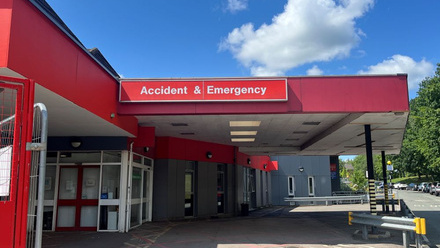Back or neck pain can affect anyone regardless of age or occupation and it can come about totally unexpectedly. Dr Norma Barry, Chief Executive of BackCare, explains why and how we should all be looking after our backs.
It’s a shocking fact that around 80 per cent of the UK population will experience back pain at some point in their lifetime – that’s four out of every five of us. Just this year, 30 million people will suffer some form of back pain. The condition is the biggest, single cause of absence from work and musculoskeletal pain costs the economy a whopping £15 billion a year.
What tends to go wrong and why?
Those suffering from debilitating back and neck pain can face both financial and personal hardship, so it’s important that people of all ages take care of their backs and are aware of how simple tasks or activities can cause injury. For example, back and neck pain can be caused by simply sleeping awkwardly, turning suddenly, or picking up something heavy. The condition can also be caused by accidents at work or through driving.
If you have back pain, it’s more than likely it will prevent you from carrying on with your profession or occupation. It will also hamper you in doing everyday activities such as housework, exercising, walking the dog, shopping, sitting at your laptop or standing cooking for any length of time. Back or neck pain can affect anyone regardless of age or occupation and it can come about totally unexpectedly.
What can you do about back pain?
There’s much you can do to avoid or manage back or neck pain. As a first stage, it’s important to understand the anatomy of your back, which is a complicated structure of interlocking bones, joints, muscles, ligaments and tendons, supported by your spine. The spine itself it made up of 24 separate bones called vertebrae and the bones of the sacrum and coccyx. Between the vertebrae are cartilage discs which act as shock absorbers and enable bending. The ligaments hold the vertebrae together, while the tendons attach the lower back muscles to the spinal column.
Back pain can be best managed through a combination of measures including physical activity, specific exercises, stretching, good nutrition, posture changes and, in respect of acute conditions, back pain management.
Contrary to popular beliefs, only in very rare instances should you rest the back to avoid aggravating the condition. You should not stay in bed or be inactive for long periods as this may delay your recovery. The important thing is to listen to your body and only rest when you’re tired or feeling fatigue or weakness.
A positive frame of mind is really important and it’s best to try and continue to keep up with your normal activities even though you are in pain. A positive mental attitude may help in the recovery process too.
When should you seek professional help?
Whilst self-care is often recommended and helpful, there are certain situations when you should always seek medical support for your back or neck pain. These include when:
- you’ve had a fall or car or bike accident
- you have lifted something very heavy and feel in pain
- pain is traveling down one of both of your legs (or they feel numb)
- you cannot control your bladder or bowels
- the pain keeps you awake at night
- pain is accompanied by a fever, chills, sweats or other signs of infection
In addition, if your back pain is associated with a medical condition such as cancer, osteoporosis, ankylosing spondylitis, sciatica or a slipped disc, you should always see a doctor.
What else can help?
There are a number of measures you can take to avoid and manage back or neck pain. When you’re already suffering from the condition, it could be helpful to take medication such as paracetamol, ibuprofen or co-codamol, to help relieve pain and muscle spasms and also apply ice and heat packs to the affected area. Ice packs should be used every 20 minutes for the first 48 to 72 hours of acute or chronic pain, followed by the use of heat packs. There are a number of devices available on the market to protect and support your back during work or carrying out everyday activities. A therapist may also be able to provide relief for your pain through massage or spinal manipulation.
Everyone ought to look after their backs by sitting and standing tall. You should aim for a neutral spine position by avoiding slouching - this involves relaxing your neck, keeping your shoulders back, down and relaxed, while lining up your head, shoulders, body and feet. You should also avoid stress and wear sensible and appropriate footwear.
Staying active is vital to the management of back and neck pain. Inactivity will usually make things worse as it can lead to stiffness and a weakening of your bones and muscles, so it’s important to keep moving. You can start slowly by taking short walks or doing gentle exercises, leading up to low impact exercise such as swimming and taking longer walks. There are also a number of exercises you can do to develop core strength to achieve good balance and stability.
Many of us lead sedentary lives, which are a major cause of recurring back pain in the workplace. When at work, you need to make a conscious effort to be as active as possible and avoid sitting down for long periods of time. You should take regular breaks, walk up escalators and take the stairs whenever you can.
Top tips to avoid back pain
- Keep active and avoid too much bed rest
- Only use painkillers in exceptional circumstances and for limited periods
- Don’t remain in the same position for a long period of time
- Avoid bending over to lift heavy objects. Ideally, bend your knees and squat, pull in your stomach muscles and hold the object close to your body as you stand up
- Take steps to manage stress
- Give up smoking
- When carrying heavy bags, use a rucksack or a bag or briefcase with a wide strap that goes over your head so it can be carried on the opposite shoulder to the strap
- Maintain a sensible weight
- Wear flat shoes rather than high heels
- Exercise regularly, but avoid those activities that involve twisting, turning, lifting or are high impact
For more information and tips on exercises for back pain, visit the NHS Choices website.







